- Home
- Quizzes
- My Quiz Activity
- Newsletters
- Sports Betting
- MY FAVORITES
- Add Sports/Teams
- SPORTS
-
NFL
- NFL Home
- Arizona Cardinals
- Atlanta Falcons
- Baltimore Ravens
- Buffalo Bills
- Carolina Panthers
- Chicago Bears
- Cincinnati Bengals
- Cleveland Browns
- Dallas Cowboys
- Denver Broncos
- Detroit Lions
- Green Bay Packers
- Houston Texans
- Indianapolis Colts
- Jacksonville Jaguars
- Kansas City Chiefs
- Las Vegas Raiders
- Los Angeles Chargers
- Los Angeles Rams
- Miami Dolphins
- Minnesota Vikings
- New England Patriots
- New Orleans Saints
- New York Jets
- New York Giants
- Philadelphia Eagles
- Pittsburgh Steelers
- San Francisco 49ers
- Seattle Seahawks
- Tampa Bay Buccaneers
- Tennessee Titans
- Washington Commanders
-
MLB
- MLB Home
- Arizona Diamondbacks
- Atlanta Braves
- Baltimore Orioles
- Boston Red Sox
- Chicago White Sox
- Chicago Cubs
- Cincinnati Reds
- Cleveland Guardians
- Colorado Rockies
- Detroit Tigers
- Houston Astros
- Kansas City Royals
- Los Angeles Angels
- Los Angeles Dodgers
- Miami Marlins
- Milwaukee Brewers
- Minnesota Twins
- New York Yankees
- New York Mets
- Oakland Athletics
- Philadelphia Phillies
- Pittsburgh Pirates
- San Diego Padres
- San Francisco Giants
- Seattle Mariners
- St. Louis Cardinals
- Tampa Bay Rays
- Texas Rangers
- Toronto Blue Jays
- Washington Nationals
-
NBA
- NBA Home
- Atlanta Hawks
- Boston Celtics
- Brooklyn Nets
- Charlotte Hornets
- Chicago Bulls
- Cleveland Cavaliers
- Dallas Mavericks
- Denver Nuggets
- Detroit Pistons
- Golden State Warriors
- Houston Rockets
- Indiana Pacers
- Los Angeles Clippers
- Los Angeles Lakers
- Memphis Grizzlies
- Miami Heat
- Milwaukee Bucks
- Minnesota Timberwolves
- New Orleans Pelicans
- New York Knicks
- Oklahoma City Thunder
- Orlando Magic
- Philadelphia 76ers
- Phoenix Suns
- Portland Trail Blazers
- Sacramento Kings
- San Antonio Spurs
- Toronto Raptors
- Utah Jazz
- Washington Wizards
-
NHL
- NHL Home
- Anaheim Ducks
- Arizona Coyotes
- Boston Bruins
- Buffalo Sabres
- Calgary Flames
- Carolina Hurricanes
- Chicago Blackhawks
- Colorado Avalanche
- Columbus Blue Jackets
- Dallas Stars
- Detroit Red Wings
- Edmonton Oilers
- Florida Panthers
- Los Angeles Kings
- Minnesota Wild
- Montreal Canadiens
- Nashville Predators
- New Jersey Devils
- New York Islanders
- New York Rangers
- Ottawa Senators
- Philadelphia Flyers
- Pittsburgh Penguins
- San Jose Sharks
- Seattle Kraken
- St. Louis Blues
- Tampa Bay Lightning
- Toronto Maple Leafs
- Vancouver Canucks
- Vegas Golden Knights
- Washington Capitals
- Winnipeg Jets
- NCAAF
- NCAAM
- Boxing
- Entertainment
- Lifestyle
- Golf
- MMA
- Soccer
- Tennis
- Wrestling
- More Sports
- RESOURCES
- My Account
- YB on Facebook
- YB on Twitter
- YB on Flipboard
- Contact Us
- Privacy Policy
- Terms of Service
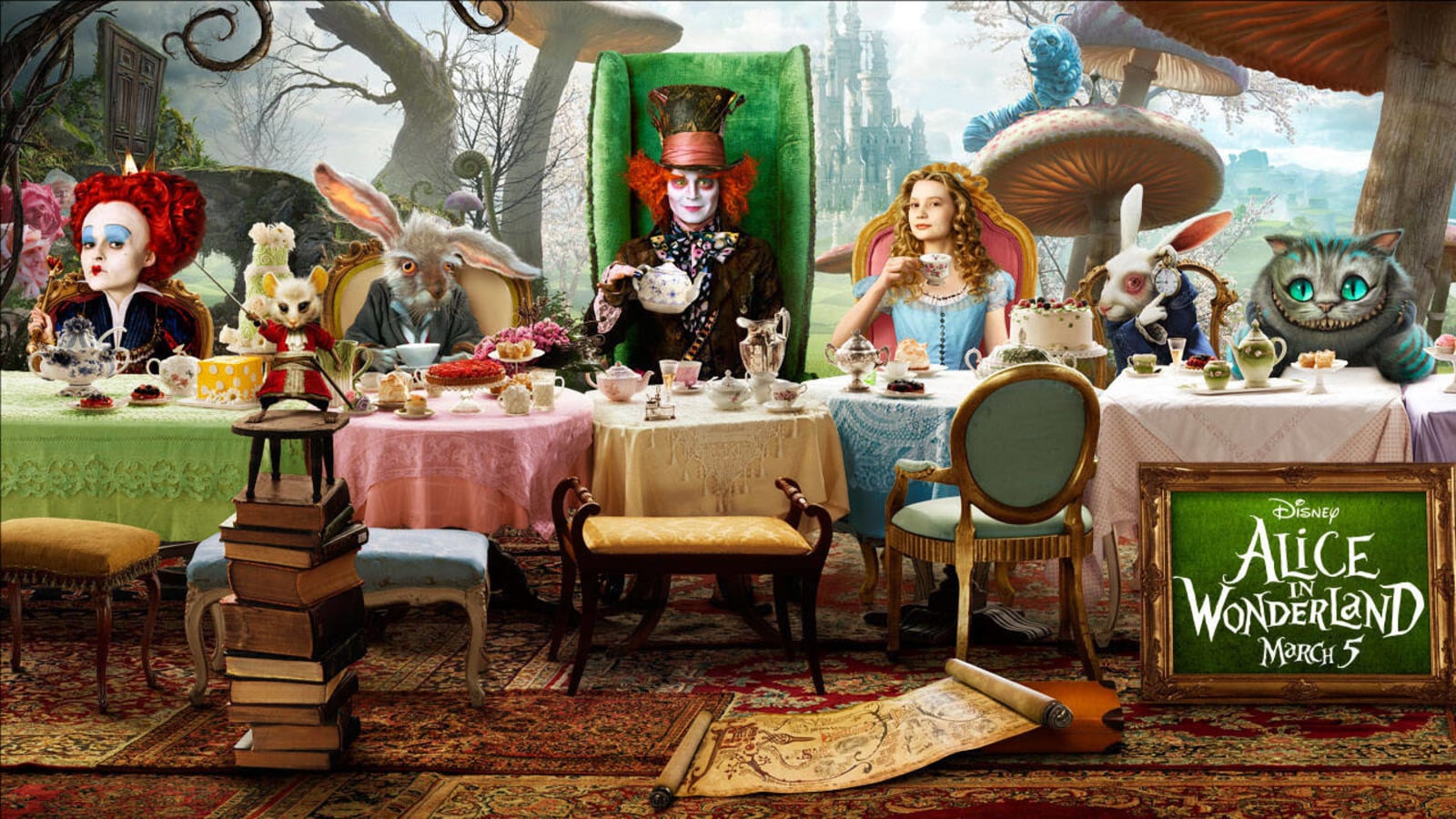
Tim Burton has a distinct style. That style helped him make a splash with movies like Beetlejuice and Edward Scissorhands. Sometimes, though, he takes on a well-worn story and tries to give it a makeover in that Burton style. The world of Lewis Carroll’s Alice in Wonderland was almost tailor-made for that. Here are 20 facts you might not know about this version of Alice in Wonderland. Maybe you can share them at your next tea party.
Burton made a deal that included a passion project

Burton was given a chance to direct two 3D films with Disney when he signed on. (3D films were having a moment.) One of them was Alice in Wonderland, but we’re betting the other movie is the one that really enticed him. It was a chance for him to do a feature-length remake of his short film “Frankenweenie,” his first calling card as a director.
The director wasn’t really a fan of the original story
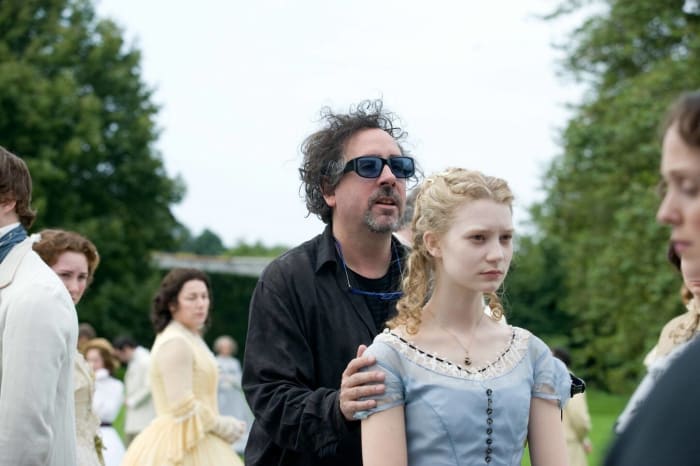
Burton did not enter the production as a fan of Alice in Wonderland. As he put it at Comic-Con in 2009, “It was always a girl wandering around from one crazy character to another, and I never really felt any real emotional connection.” The director wanted a chance to add some depth to the story and make it feel like a story, not “a series of events.”
Burton brought in a poem from the sequel

You may be familiar with “Jabberwocky,” the nonsense poem Carroll included in Through the Looking Glass, the sequel to Alice’s Adventures in Wonderland. Burton decided to make that poem central to his film and turned the Jabberwock into a villainous beast that Alice must slay. Note we said “Jabberwock,” which is the name of the creature in the poem. For the movie, Burton changed the character’s name to the Jabberwocky.
Alice doesn’t get first billing in 'Alice in Wonderland'
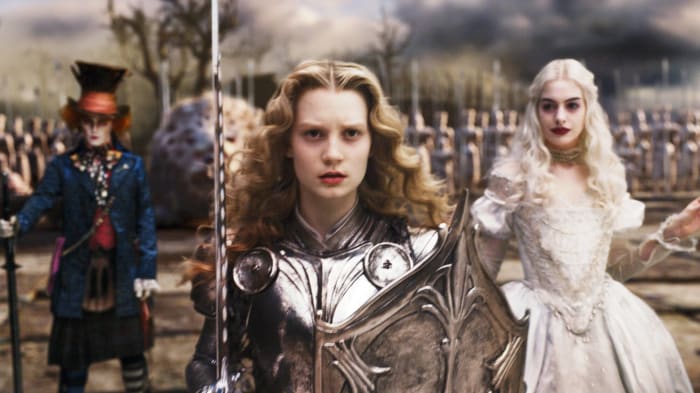
You won't see Alice getting first billing, whether it’s the end credits or the film’s poster. In fact, on the poster, you won’t see her at all. Instead, the poster features Johnny Depp’s Mad Hatter, and only Depp’s name appears on the poster. As a movie star and frequent Burton collaborator, much of the film revolved around him.
Depp had a lot of inspirations for his turn as the Mad Hatter
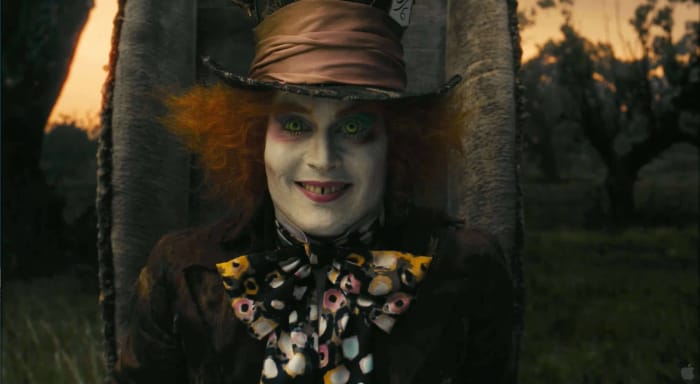
Give Depp a chance to put together an over-the-top costume and embody an unusual accent, and he’ll do it. Alice in Wonderland is perhaps the foremost example of that. Physically speaking, the Mad Hatter’s orange hair is supposed to be a byproduct of the mercury poisoning the character, as a hatter, experiences. The character was compared to a mood ring, and Depp based the Hatter’s vacillating voice on Lewis Carroll and a Scottish character named Rab C. Nesbitt.
Anne Hathaway was offered the chance to play Alice once upon a time

Early in Disney’s process of creating a live-action version of Alice in Wonderland, they approached Anne Hathaway for the role of Alice. However, after starring in The Princess Diaries, she wasn’t interested. Hathaway did say she would be interested in playing the White Queen down the line, and sure enough, she got the role when the time came.
Two characters were mashed into one
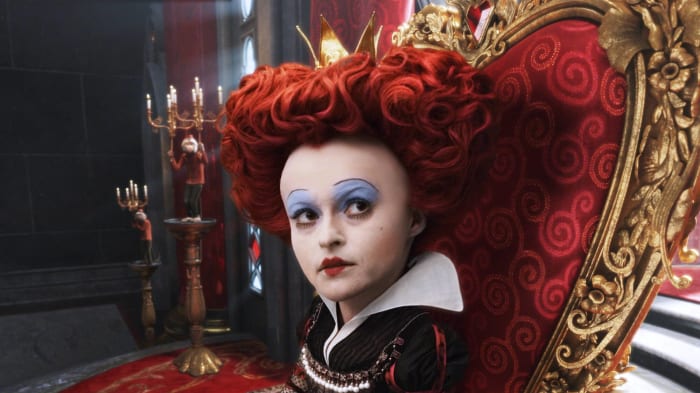
The movie's antagonist is the villainous Iracebeth of Crims, a.k.a. the Red Queen. Played by Helena Bonham Carter, the character in the movie is a combination of two people from the story. Iracebeth is a combo of the Red Queen and the Queen of Hearts. Her first name, by the way, is a play on the word “irascible.”
Carter was inspired by an unexpected source

Technology made the Red Queen’s head three times bigger than Carter’s actual head. The actress was inspired by her and Burton’s daughter, Nell, for her portrayal of Iracebeth. “The Red Queen is just like a toddler because she's got a big head and she's a tyrant,” said Carter.
Several inspirations were used for the White Queen
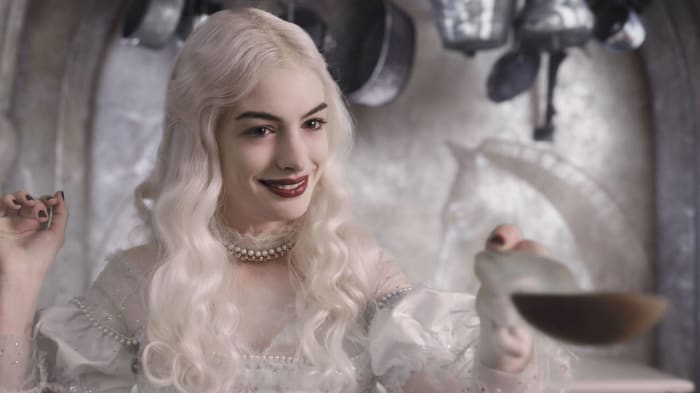
Hathaway described her character the White Queen as a “punk-rock vegan pacifist.” For her part, the actress was inspired by Debbie Harry of Blondie and the actress Greta Garbo. Meanwhile, Burton got the inspiration for the White Queen’s look from Nigella Lawson.
Michael Sheen had to swap roles

Initially, Sheen was going to play the Cheshire Cat. However, scheduling conflicts got in the way. Stephen Fry stepped into the role, but Sheen was able to stay in the film. He played the White Rabbit instead.
They changed their mind about the caterpillar
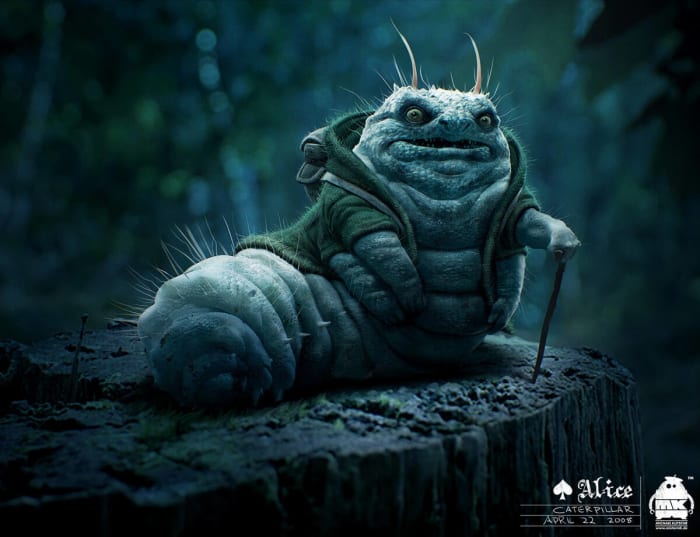
The caterpillar, now named Absolem, gets a glow-up in Alice in Wonderland. He’s now the head of the “resistance.” Alan Rickman voices Absolem. Initially, they planned to film Rickman’s face and use it for the character but then changed their minds. The caterpillar’s face is totally digital, but they tried to make him look a little like Rickman.
It was one actor’s final movie
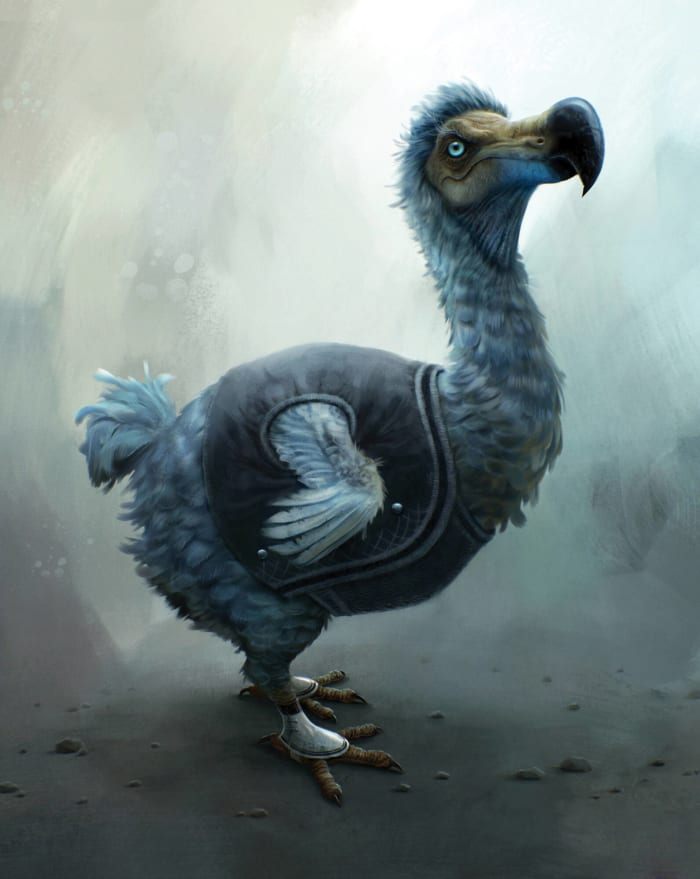
Michael Gough is probably best known for playing Alfred in four Batman movies, starting with Tim Burton’s 1989 Batman. He voiced the dodo in this film, which would be his last role. The actor died a year after the movie was released, but he made it all the way to the ripe old age of 94. Gough had also played the March Hare in a 1966 televised play version by the BBC.
Burton went all out for The Jabberwocky
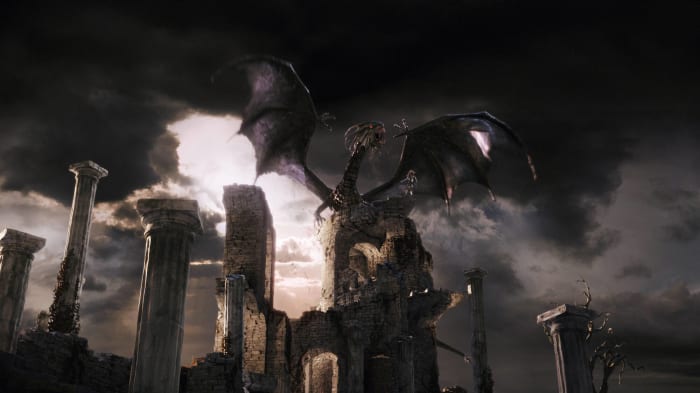
The Jabberwocky only has two lines in Alice in Wonderland, but Burton wasn’t messing around. He got the legendary British actor Christopher Lee to voice the character. He reasoned that the Jabberwocky is an iconic character, and Lee is an “iconic guy.” The roars of the Jabberwocky weren’t done by Lee, though, and were instead done by Frank Welker.
The movie was a first for Burton (and he went all the way in)
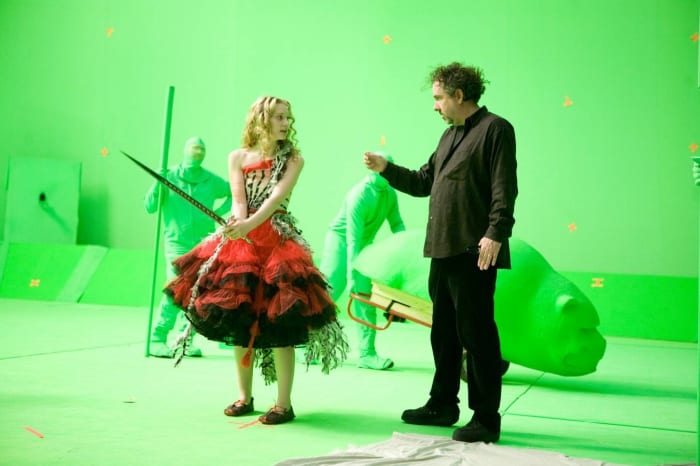
To bring the world and the characters of Alice in Wonderland to life, Burton used a green screen. This was the first time Burton had used a green screen in one of his films, but he dove in with both feet. Apparently, 90 percent of the film was shot on a green screen.
All that green screen wasn’t easy on the actors
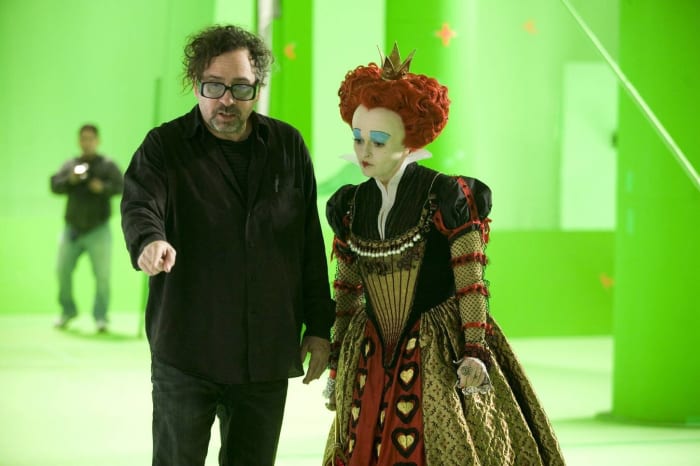
To deal with all the green screen, Burton had lavender lenses placed into his glasses to counteract it. Of course, the actors couldn’t do the same thing. Evidently, it was common for cast members and crew members to get nauseous during filming.
There was a concept album

Danny Elfman provided the score for Alice in Wonderland. Elfman scoring a Burton film? What a shocker! But that wasn’t the only musical element of the movie’s release. Disney put together a concept album called Almost Alice , which they released the same day as the Elfman score. The lead single, “Alice,” was performed by Avril Lavigne.
It was a huge hit
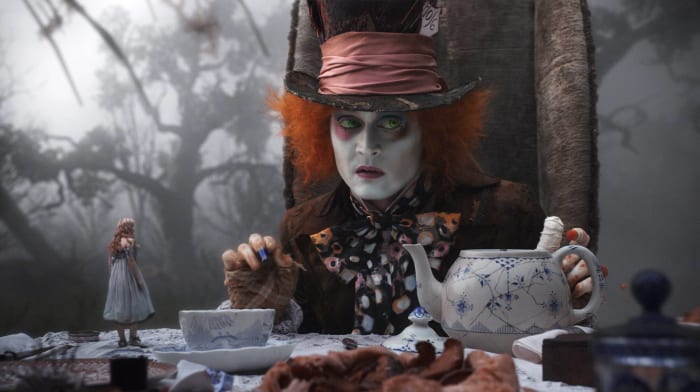
Alice in Wonderland got a lukewarm reception from critics, but audiences turned out in droves. Though the movie was made for a robust $200 million, it made that money back and then some. The movie broke the billion-dollar mark at the box office worldwide. It’s the highest-grossing Burton film and was also the second-highest-grossing movie of 2010 behind Toy Story 2.
The movie won two Oscars
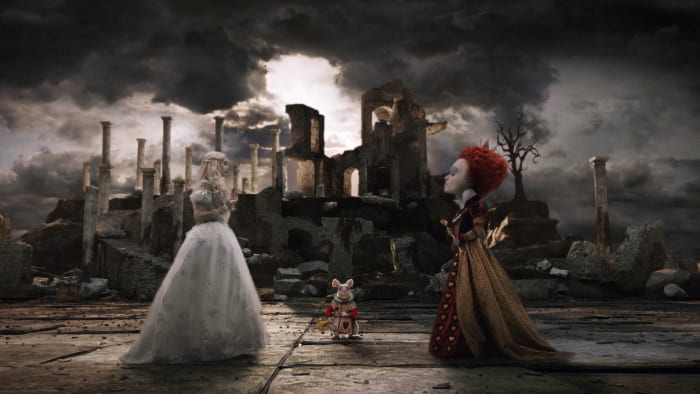
The Academy Awards liked the look of Alice in Wonderland. It was nominated for Best Visual Effects, Best Art Direction, and Best Costume Design. Not only that, the film won the latter two of those awards.
The sequel was practically a flop

After the huge success of Alice in Wonderland, a sequel was inevitable. However, while most of the cast and screenwriter Linda Woolverton returned, Burton did not. Instead, James Bobin took over as the director. Alice Through the Looking Glass is, relative to its predecessor, one of the least successful sequels, The film was made on a budget of $170 million and made $299.5 million worldwide. Enough for the movie to turn a slim profit, but considering the first film made over a billion dollars, that’s a huge disappointment.
It started the wave of Disney’s live-action adaptations

The success of Alice in Wonderland got Disney moving in the direction they have remained in ever since. It wasn’t the first live-action remake of an animated film, but it was the first since 102 Dalmatians, which came out in 2000 (and was an original story). In the wake of Alice, we got Maleficent, Beauty and the Beast, Aladdin, and The Lion King, with more to come. There were also plans for a Broadway adaptation of Burton’s film, but they didn’t come to fruition.
Chris Morgan is a sports and pop culture writer and the author of the books The Comic Galaxy of Mystery Science Theater 3000 and The Ash Heap of History. You can follow him on Twitter @ChrisXMorgan.
More must-reads:
- 35 co-op video games that won't drive your family apart
- 20 facts you might not know about 'The Departed'
Trending in Entertainment
Customize Your Newsletter
 +
+
Get the latest news and rumors, customized to your favorite sports and teams. Emailed daily. Always free!
Use of this website (including any and all parts and
components) constitutes your acceptance of these
Terms of Service and Privacy Policy.

